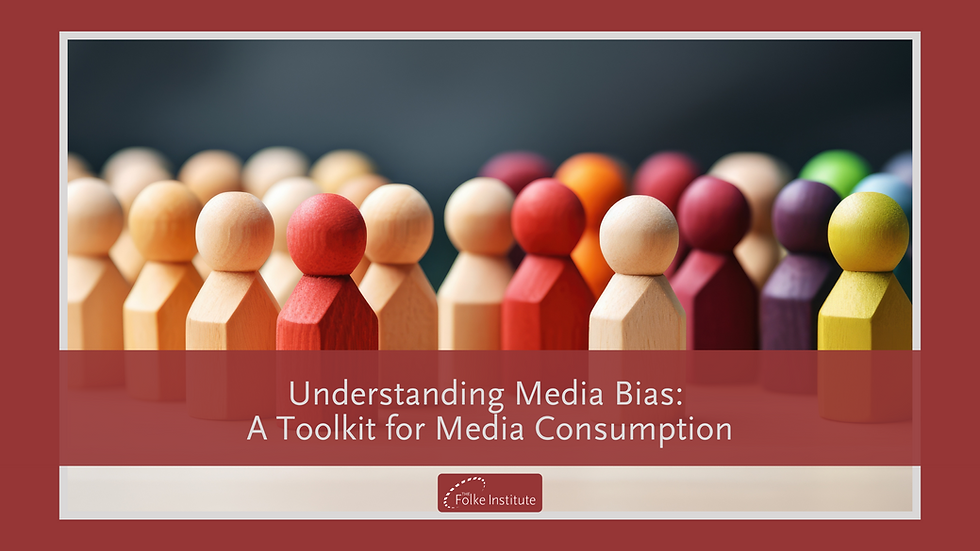
The biases we hold, whether we are aware of them or not, can unintentionally reinforce stereotypes and lead to dehumanizing narratives. Bias is an inherent aspect of human thought; it aids us in shaping our identities and processing the immense amount of information we encounter daily. However, it is crucial to recognize the distortions these biases can create.
By becoming aware of our biases, we gain a clearer understanding of our viewpoints and can approach news with greater objectivity. Studies show that during conflicts, when polarization and an "us versus them" mindset are common, acknowledging our biases can help reduce stigmatization and foster empathy.
There are many types of bias, and understanding the different variations can help you recognize them in your own information consumption. Remember, it’s completely normal to have them, and growing away from internalizing information based on bias takes time. Be kind to yourself as you grow, and enjoy the process, keeping in mind that, as Dr. Carrie Spell-Hansson, TFI’s founder and CEO, likes to say, “the journey is the destination”.
Common Types of Bias:

Here are real-life examples for each type of bias:
Anchoring Bias
Example: When shopping for a car, the first price you see becomes your reference point. If the initial price is $30,000, you may view a $25,000 car as a great deal, even if it’s still overpriced compared to market value.
Bandwagon Effect
Example: During elections, a candidate gaining popularity can cause more people to support them simply because others are doing so. This can lead to a surge in votes for that candidate, regardless of their policies or qualifications.
Stereotyping
Example: Assuming that all teenagers are reckless drivers based on stories and a few personal experiences. This belief can lead to unfair treatment of young drivers despite many being responsible and careful.
Conservation Bias
Example: A long-time employee resists adopting new software because they believe the old system, which they've used for years, is superior. They dismiss the new software's benefits, sticking to their outdated preferences.
Confirmation Bias
Example: If you believe that a specific diet is the healthiest, you might only seek out information and research that supports this belief, ignoring studies that show other diets can be equally or more effective.
Blind Spot Bias
Example: A manager believes they are fair and unbiased in their hiring process but consistently hires candidates who share similar backgrounds or viewpoints, not recognizing their own preference for familiar traits and perspectives.
Why it Matters
While biases are natural, it's important to be aware of them. If we don't check our biases, they can lead to more division and polarization. A healthy and respectful community can help prevent the dehumanization of those we see as different. When taking in as much information as a person does daily via smart phones or other devices, it is important to regulate bias to avoid feeling overwhelmed and to stop the spread of incorrect information.
The Folke Institute believes that recognizing and addressing these biases is fundamental to fostering a more inclusive and empathetic society. By educating ourselves and others about the different types of biases and their impacts, we can create a more nuanced understanding of complex issues and contribute to a more just and compassionate world.
TFI has helped many organizations understand bias. We know how to help employees and managers recognize cognitive, implicit, systemic, and unconscious bias and to move towards rethinking and relearning interaction strategies. Good leaders grow past bias and embrace equity. If this is something your organization needs, please reach out to us at info@thefolkeinstitute.com.

Comments